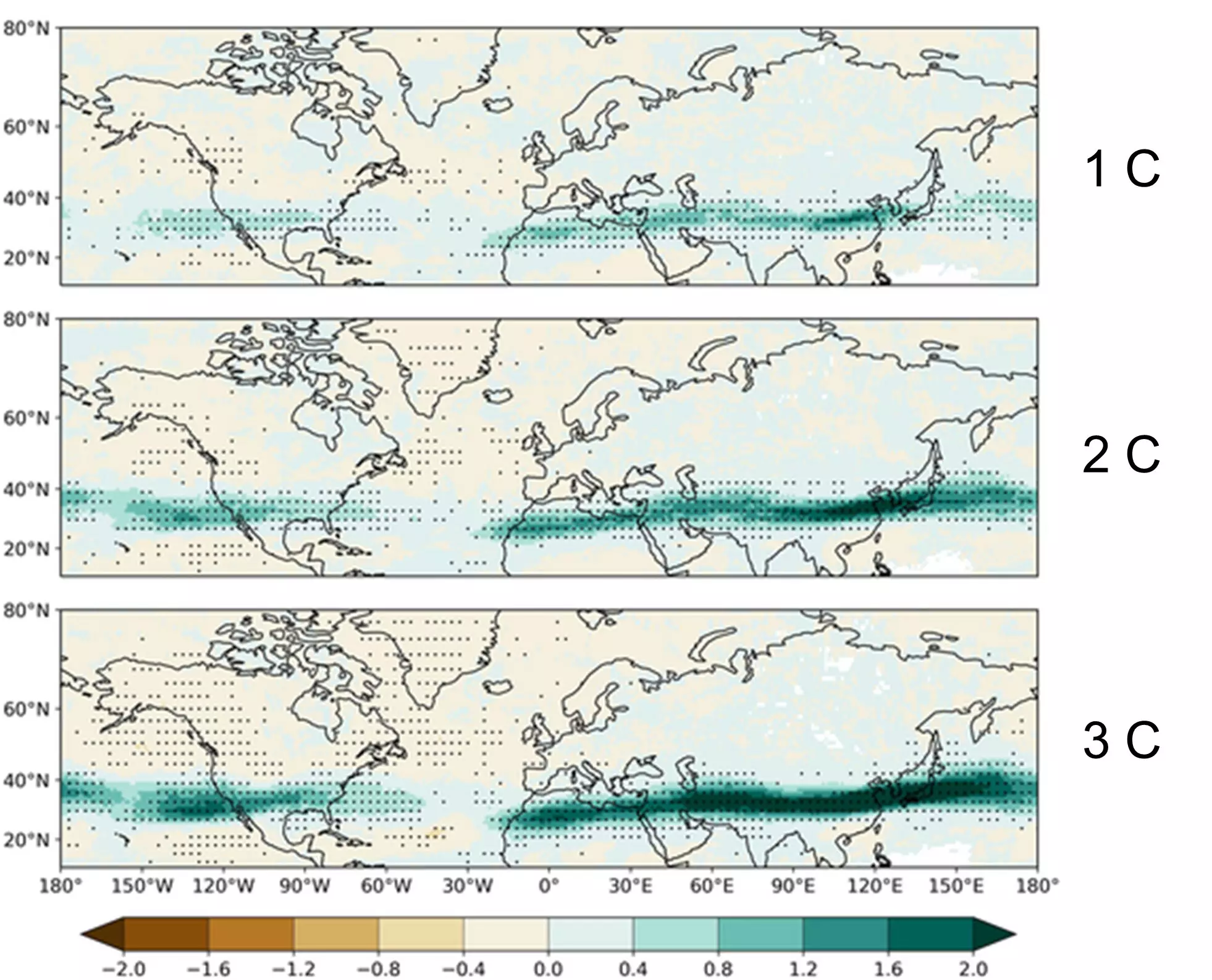Clear air turbulence (CAT) is one of those phenomena that mercilessly disrupts our airborne journeys, yet it often escapes the rigorous scrutiny it deserves. Unlike traditional turbulence that we anticipate during thunderstorms or mountainous terrains, CAT surprises pilots and passengers alike, making it an enigmatic adversary in the skies. Recent research paints a troubling picture: this invisible turbulence is expected to rise sharply in frequency and severity as climate change accelerates in the Northern Hemisphere. The urgency of acknowledging this shift cannot be overstated, especially given its direct implications for aviation safety and passenger comfort.
The Climate Connection
Scientific investigations poignantly illustrate that as the global climate warms, the dynamics of our atmosphere are also evolving. The study published in the esteemed Journal of Geophysical Research: Atmospheres indicates a dramatic uptick in CAT occurrences from 1980 to 2021, with alarming projections signaling further increases in the future. The research reveals that CAT could intensify in regions heavily influenced by the jet stream—particularly over areas like North Africa, East Asia, and the Middle East. This suggests that what were once occasional disturbances could morph into regular challenges for airlines globally.
Jet Streams: The Main Players
At the heart of the CAT phenomenon lies the jet stream—high-altitude air currents that dictate much of our weather and atmospheric behavior. These currents are like highways in the sky, but as our climate changes, their paths and velocities are becoming erratic. Research led by atmospheric scientist Mohamed Foudad demonstrates that the energy dynamics within the atmosphere are also transforming, leading to increased vertical wind shear. This surge can cause turbulence spikes that catch aircraft off guard, transforming a flight into a jarring experience without any prior warning.
As the temperature rises, the jet streams are not just moving faster; they’re becoming more volatile. Currently, CAT is encountered by pilots about 1% of the time in the Northern Hemisphere, yet models project that frequency is likely to rise significantly as global temperatures increase. East Asia, with its robust subtropical jet stream, stands out as the region where CAT is most prevalent, indicating that some parts of the world are on the frontline of this invisible threat.
The Implications for Aviation Safety
The safety implications of this atmospheric evolution merit serious discussion. With CAT accounting for around 70% of all weather-related aviation accidents in the United States, the stakes couldn’t be higher. Recent incident reports from Singapore Airlines and Air Europa highlight the very real dangers posed by sudden bouts of CAT, with multiple injuries reported as passengers and crew were unprepared for the abrupt turmoil. In light of these occurrences, it becomes evident that airlines must adapt swiftly to this growing risk.
Foudad argues for a crucial reevaluation of aviation design in response to these findings. If CAT is to become more frequent and intense, aircraft will need improved engineering to withstand such scenarios better. This proactive approach is essential not just for passenger safety but also for the fiscal health of airlines, which could face costly repercussions from turbulence-related incidents and damage.
Challenges in Forecasting Turbulence
But forecasting CAT with precision remains a formidable challenge. Despite advancements in technology and data collection, the inherent unpredictability of clear air turbulence complicates even the best forecasting models. The study reveals that decreases in forecast accuracy could lead to more severe turbulence being undetected, increasing safety risks for aircraft in flight.
One noteworthy aspect of the research is its focus on analyzing climatic data from 1980 to 2021, which provides a comprehensive backdrop for understanding how patterns of turbulence have shifted. While certain regions, like North Africa and East Asia, present clear indications of climate change-induced turbulence increases, the situation is murkier in regions like the North Atlantic and North Pacific. The researchers have suggested that climate variability might be masking the true extent of turbulence changes in these areas, thereby complicating jurisdictions of investigation.
Looking to the Future
As we contemplate the future of air travel in an era defined by climate change, acknowledging the potential for increased clear air turbulence is essential. The aviation industry stands at a crossroads, faced with the challenge of adapting to a new normal characterized by unpredictable turbulence. While the prospect of bumpier rides may deter passengers from feeling completely secure, it’s worth noting that modern aircraft are engineered to endure extreme turbulence.
Nevertheless, as we fly into a future that may see more dramatic encounters with clear air turbulence, both airlines and passengers need to remain vigilant. Holding onto knowledge, preparedness, and adaptability will be key as we navigate these increasingly turbulent skies ahead.

